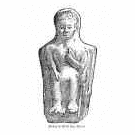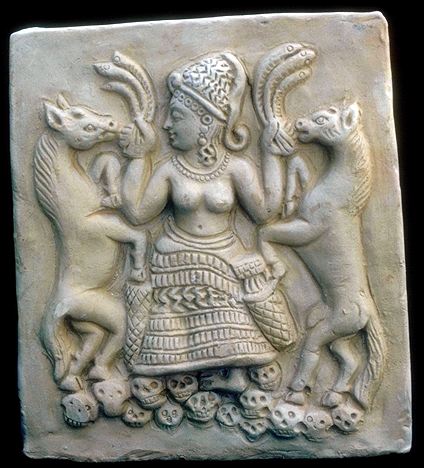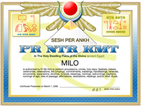Summary: Astarte is the Phoenician Goddess of love and fertility.
- names
- basic information
- relations
- magick
- symbol
- candle color
- planet
- herbs
- myths
- holy days
- Charge of the Goddess
- priests/priestesses
- books
names:
Phoenician names: Astarte
Hebrew names: Astarte
The local Astarte in Early Bronze Age III era of Byblos was called Ba’alat Gebel, meaning the “Mistress of Byblos”. The temple and sacred pool for the Mistress of Byblos was at the center of the ancient city.
(NOTE: In addition to native variations by locality or over time, there are often several possible transliterations into the Roman alphabet used for English.)
basic information:
Astarte:, Lady of the Beasts, Phoenician (also Hebrew) Goddess of love and fertility.
A lunar Goddess, often depicted with crescent horns.
Astarte’s relations:
Wife or consort of Baal.
Same as the Hebrew Goddess Astarte
Considered by the Romans to be the same Goddess as the Roman Diana.
In the New Kingdom of ancient Egypt, Astarte was absorbed into the Egyptian religion as Caanite and Phoenician peoples were absorbed into Egyptian society.
Large numbers of Canaanite merchants living in north Memphis during the New Kingdom worshiped Ba’al and his consort Astrate.
Astarte and Reshef were displayed as the protectors of Amenophis II’s chariot team.
In the Egyptian religion both Anath and Astarte are daughters of Ra.
Anath and Astarte appear in formal lists of Kemeetic (ancient Egyptian) neteru (deities) from the New Kingdom to the late Roamn times.
magickal information and correspondences:
Symbol: the dove; Astarte is often depicted with crescent horns

Sacred candle color: pink, green, red, and silver
planet:
Planet: Moon![]()
herbs associated with Astarte:
myths and beliefs:
The monster Yam, the Prince Sea, lusts after Astarte until defeated by Ba’al, the West Semetic hero-deity.
holy days
Friday: Astarte is associated with Friday.
April: Astarte is associated with April.
other:

Picture courtesy of JBL Statues
this reproduction was sold by Sacred Source
JBL Statues is now Sacred Source
Astarte — The Lady of the Beasts. Along with Lilith she is one of the principle Elohim (this Hebrew plural word means goddesses and gods, though translated as God by biblical revisionists for the past 2,000 years) of the Semites of Phoenicia. Consort to Baal, she is here depicted with two foals in ecstatic dance, her typically upraised arms grasping serpents. She was the Great Goddess, all-powerful, creating-preserving-destroying, an embodiment of Mother Nature. Also known as Ashtoroth, in some poses she is identical with images of Kali, while in her role of virgin she is an ancient prototype of Mary. —picture and text © 1996 JBL Statues (now called Sacred Source), original text created by Tom Laudeman
Astarte is associated with the Moon.

Charge of the Goddess:
|
—courtesy of Aurora Lights Circle
|
religious title certificate

Get a beautiful certificate declaring that you are a priestess, priest, high priestess, high priest, witch, or shaman of Astarte. This is a real religious certificate meeting government standards for conducting marriages and other ceremonies.
See also: Assyrian Astarte
external links:
If you follow any of the links offered on this web site, no spell begging. Especially no love spell begging.
- Charge of the Goddess from Charles Godfrey Leland’s 1899 “Aradia: Gospel of the Witches” via DJ Conway’s “Moon Magick” (OUTSIDE LINK — PICTURE)

If you have an Astarte-related web page, please send the URL to Milo. Please indicate if there is a picture on your web page.
Books
If you want your book reviewed, please send a copy to: Milo, POB 1361, Tustin, CA 92781, USA.
Moon Magick: Myth & Magick, Crafts & Recipes, Rituals & Spells (Llewellyn’s Practical Magick); by D. J. Conway; Llewellyn Publications; August 1995; ISBN 1567181678; paperback; 320 pages; $13.56
![]()
If you want your book reviewed, please send a copy to: Milo, POB 1361, Tustin, CA 92781, USA.















